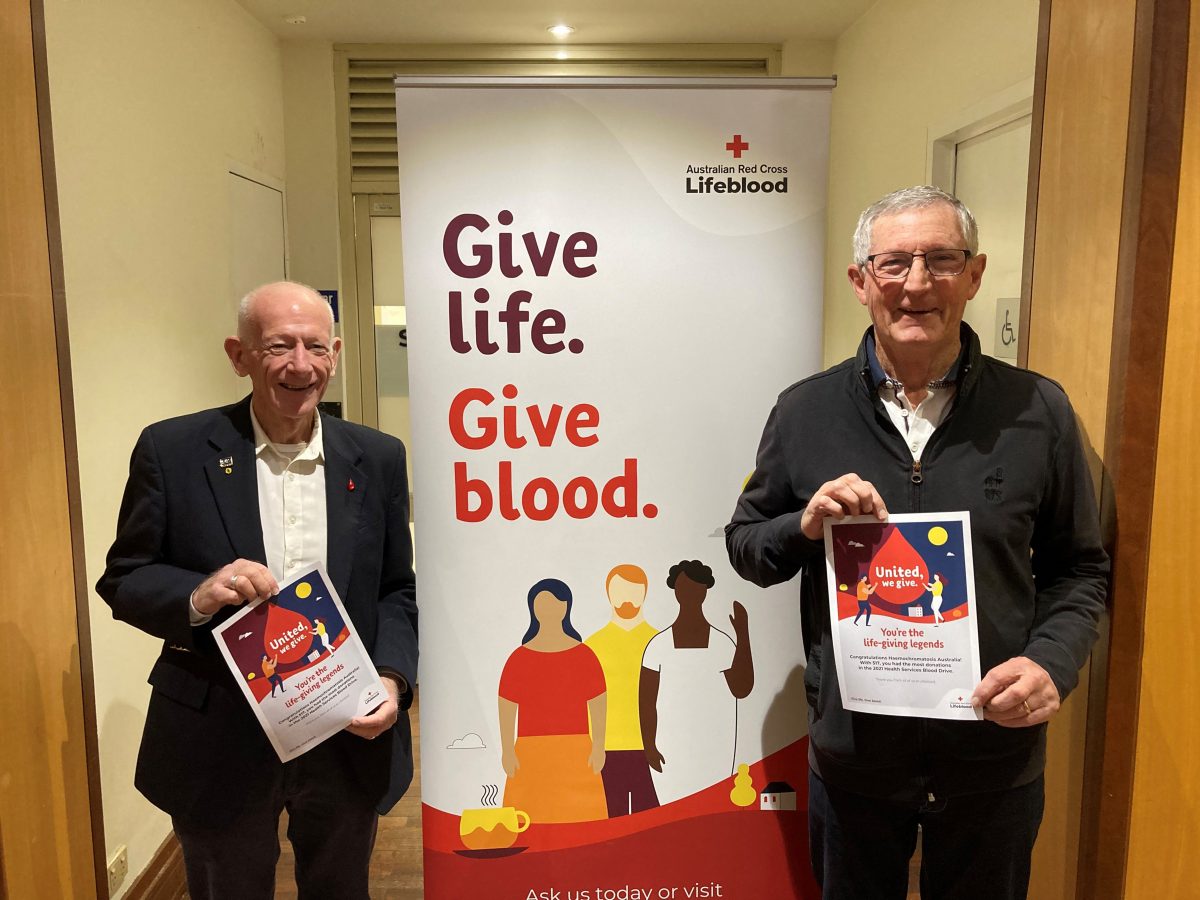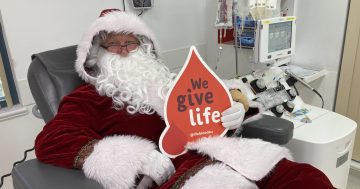
Jeff Hobson (left) and John Payne have the same genetic disorder but use it to do good. Photo: Jeff Hobson.
Questacon, Telstra Tower and several other Canberra buildings and landmarks will be lit up red during the first week of June for World Haemochromatosis Week (Saturday to Friday, 1 to 7 June).
The global campaign raises awareness for haemochromatosis, a genetic disorder that causes the body to absorb too much iron and can lead to organ or tissue damage if left untreated.
It is the most common genetic disorder in Australia, with about one in 200 people of northern European origin inheriting the genetic risk for developing the disorder from their parents (one reason it is known as the ‘Celtic curse’).
Hemochromatosis Australia treasurer and Canberran Jeff Hobson was diagnosed with the disorder about 30 years ago after an initial misdiagnosis of hepatitis C by his GP.
The genetic disorder’s non-specific symptoms of general fatigue and weakness, weight loss, abdominal pain and joint aches mean the condition tends to go under-diagnosed.
Once diagnosed, Mr Hobson began receiving venesections, a procedure similar to donating blood, which is done regularly until iron levels return to normal.
“I was attending Canberra Hospital on a weekly basis for about four or five months [to receive the venesections],” he said.
“I do recall one time they couldn’t find a vein so they ended up going to the back of the hand … and I came out of there and I was full of sweat. It was very painful.
“After [Canberra Hospital] got it under control, I finally got into [Australian Red Cross] Lifeblood, who do [venesections] on a regular basis now, as a therapeutic donor.”
Mr Hobson now only has to undergo the procedure once every three months and the upside of his therapeutic donations is his blood can be used to treat patients.
“It’s a win-win situation … you’re providing a blood product which can be used and can save roughly three people for each donation that we make,” he said.
He has made 110 recorded therapeutic donations but estimates he has made a further 40 unrecorded ones since he was diagnosed with the disorder.
For the past two years, Mr Hobson has been volunteering for Hemochromatosis Australia to raise awareness, hoping the condition can be identified before damage occurs.
A blood test can reveal whether a person may have the disorder, and a second genetic blood test can confirm whether the person has the disorder’s telltale gene mutations.
Mr Hobson said he also wanted people to know that the disorder doesn’t only affect people in their 40s or older, as he was at the time of his diagnosis.
“In Canberra, we recently had a lady in her early 30s who was diagnosed with hemochromatosis,” he said.
“She had a brother who was aged 27. He was tested at the time when they found out she had it.
“They realised that he [also had it and] was starting to advance into damaging his liver.”
Mr Hobson encouraged others with symptoms or with family members diagnosed with the condition to follow suit and get tested.
The Canberra buildings and landmarks being lit up for all or part of World Haemochromatosis Week are:
- Shine Dome, Academy of Science
- John Gorton Building
- National Carillon
- Royal Australia Mint
- Old Parliament House
- Light-rail stations
- Malcolm Fraser Bridge
- Questacon
- Telstra Tower.
If you’ve been diagnosed with hereditary haemochromatosis, resources are available from Haemochromatosis Australia.
Blood donors are invited to join the Haemochromatosis Australia Lifeblood team, or call the Haemochromatosis Australia infoline on 1300 019 028 to find out more.












